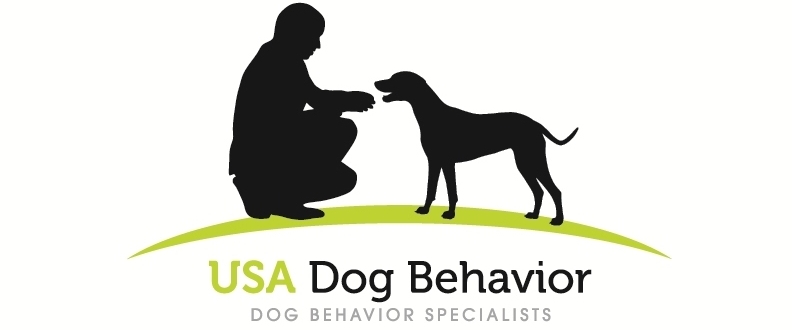Your Composure is Important When Your Dog is Losing It
©Scott Sheaffer, CDBC, CBCC-KA, CPDT-KA, USA Dog Behavior, LLC
What do I mean when I say a dog is “losing it”? I’m talking about when dogs go over threshold. “Threshold” is a term that defines the start of panic in a dog. Dogs go over threshold when they bark or show other aggressive behaviors to: unfamiliar humans or dogs, sudden loud noises, visitors at the front door, moving vehicles, etc. If this reactivity is allowed to continue, it can become much more severe and can include adrenalin being flooded into a dog’s body - which really starts to escalate this behavior. Dogs are also in the beginning stages of panic when they begin to forcefully attempt to avoid one of the triggers mentioned above by moving away from or hiding from the trigger. In both cases (i.e., aggression versus avoidance), dogs are trying to increase the distance between them and the scary thing so they feel safe.
“But Scott, there has to be more to the story.”
What do most dog owners do when their dog goes over threshold by barking and showing other forms of aggression? There are three choices. Only one of them is the right choice.
Some dog owners yell at their dog, jerk the leash or do some kind of other punishing behavior. The problem with this is that dogs are already anxious about whatever is triggering them; punishment is not likely to help them feel better about things. It will normally stop the behavior for a very short period, but it always returns.
Have you ever thought about what dogs might be thinking when an owner is punishing them for barking? Many behaviorists believe it’s something like, “Wow, my owner is scared of this thing too. He’s flipping out and it’s making me more afraid.”Many owners try to calm and soothe their dogs when they go over threshold. The problem is this could actually reinforce the reactive behavior. Aggressive behaviors can be trained and reinforced - owners don’t want to do it unintentionally.
Ignore the behavior. This is the correct choice of the three options. If we ignore the behavior, we don’t make dogs more nervous and we also don’t reinforce the behavior itself. In essence, the owner is to remain calm, cool and collected when dogs go over threshold.
“But Scott, there has to be more to the story.” And there is. We know that when dogs are scared of something and start to show some type of aggression (e.g., barking, lunging, growling, vocalizing), owners simply need to not respond to the behavior. However, while it’s important that owners not respond to the behavior, they must simultaneously provide an environment so their dog is able to calm down. Simply standing there and waiting for the reactivity to end doesn’t usually work. Owners need to move their dog further away from the trigger and/or move their dog behind a barrier so the dog can’t see the trigger any longer (most dog reactivity is visually cued).
How about those dogs that show avoidant behaviors (e.g., fleeing or hiding) when in the presence of the types of triggers mentioned above? Approximately 10% of dogs respond to things that scare them by trying to avoid them versus dogs that use aggression. The same rules apply in these situations. Certainly don’t punish dogs by dragging them near the thing they are trying to escape from. And don’t soothe dogs when they are trying to avoid a trigger. Give avoidant dogs enough space to stay below threshold and/or move them behind a barrier to block visual access to the trigger.
The following might be the most important thing to keep in mind when handling your dog during these times: you are to remain “cool, calm and collected”. Your demeanor in handling your dog during these times is critical. Think of the scared human child who looks to his or her parents for feedback. “Is this thing as scary as it seems to me?” asks the child as he or she looks at the parents. Panicky parents, panicky child. You know how this works with children and the same applies to dogs when they are fearful and reactive.
Using this technique in managing dogs who are panicky in the presence of a trigger keeps the reactivity from escalating and is the first step in a long-term solution to this problem behavior.

